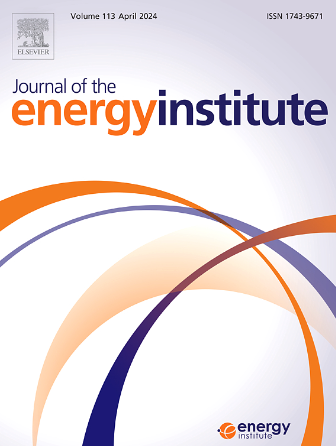The application of highly active vermiculite-based hydrotalcite-derived catalysts in methane dry reforming: The impact of promoter doping on carbon deposition
IF 5.6
2区 工程技术
Q2 ENERGY & FUELS
引用次数: 0
Abstract
The dry reforming of methane (DRM) exhibits promising potential for the treatment and valorization of greenhouse gases; however, catalyst deactivation remains a significant challenge faced by this process. In this study, wastewater generated during the activation of vermiculite was utilized as a raw material to synthesize bimetallic layered double hydroxide (LDH) materials. Various additives such as X (La, Ce, Sm) were incorporated into the VMT-X-NiCoHTlcs catalysts using an impregnation method. The physicochemical properties of the catalysts were characterized employing techniques such as X-ray diffraction (XRD), Nitrogen adsorption-desorption, hydrogen temperature-programmed reduction (H2-TPR), and thermogravimetric analysis (TG). The catalytic activity was subsequently tested in a fixed-bed reactor at 750 °C under atmospheric pressure. Overall, all catalysts demonstrated excellent activity (with CH4 conversion rates exceeding 85 % and CO2 conversion rates surpassing 90 %) and stability over 24 h. This performance is likely attributed to the ionic level distribution of the active components Ni and Co within the layered double hydroxide structure, which can provide small particle sizes and uniform dispersion of active species through leaching during pretreatment, resulting in strong metal-support interactions. Furthermore, the incorporation of additives (X = La, Ce, Sm) significantly enhances the carbon deposition behavior of the catalyst. It has been observed that the addition of these additives facilitates the activation of CO2 molecules, suppresses the excessive cracking of CH4, and achieves a balance with the dissociation of CH4, thereby reducing the formation of carbon deposits.
高活性蛭石基水滑石衍生催化剂在甲烷干重整中的应用:促进剂掺杂对碳沉积的影响
甲烷干重整(DRM)在处理和增值温室气体方面具有广阔的潜力;然而,催化剂失活仍然是该工艺面临的重大挑战。本研究以蛭石活化过程中产生的废水为原料,合成了双金属层状双氢氧化物(LDH)材料。采用浸渍法将各种添加剂如X (La, Ce, Sm)掺入VMT-X-NiCoHTlcs催化剂中。采用x射线衍射(XRD)、氮气吸附-解吸、氢程序升温还原(H2-TPR)和热重分析(TG)等技术对催化剂的理化性质进行了表征。随后在固定床反应器中,750℃常压下测试了催化活性。总体而言,所有催化剂在24 h内均表现出优异的活性(CH4转化率超过85%,CO2转化率超过90%)和稳定性。这种性能可能归因于层状双氢氧化物结构中活性组分Ni和Co的离子水平分布,这可以通过预处理过程中的浸出提供小粒径和均匀分散的活性物质,从而产生强烈的金属支撑相互作用。此外,添加剂(X = La, Ce, Sm)的加入显著提高了催化剂的积碳行为。观察到,这些添加剂的加入促进了CO2分子的活化,抑制了CH4的过度裂解,与CH4的解离达到平衡,从而减少了碳沉积的形成。
本文章由计算机程序翻译,如有差异,请以英文原文为准。
求助全文
约1分钟内获得全文
求助全文
来源期刊

Journal of The Energy Institute
工程技术-能源与燃料
CiteScore
10.60
自引率
5.30%
发文量
166
审稿时长
16 days
期刊介绍:
The Journal of the Energy Institute provides peer reviewed coverage of original high quality research on energy, engineering and technology.The coverage is broad and the main areas of interest include:
Combustion engineering and associated technologies; process heating; power generation; engines and propulsion; emissions and environmental pollution control; clean coal technologies; carbon abatement technologies
Emissions and environmental pollution control; safety and hazards;
Clean coal technologies; carbon abatement technologies, including carbon capture and storage, CCS;
Petroleum engineering and fuel quality, including storage and transport
Alternative energy sources; biomass utilisation and biomass conversion technologies; energy from waste, incineration and recycling
Energy conversion, energy recovery and energy efficiency; space heating, fuel cells, heat pumps and cooling systems
Energy storage
The journal''s coverage reflects changes in energy technology that result from the transition to more efficient energy production and end use together with reduced carbon emission.
 求助内容:
求助内容: 应助结果提醒方式:
应助结果提醒方式:


